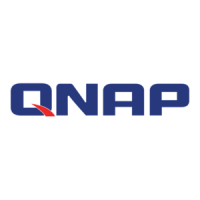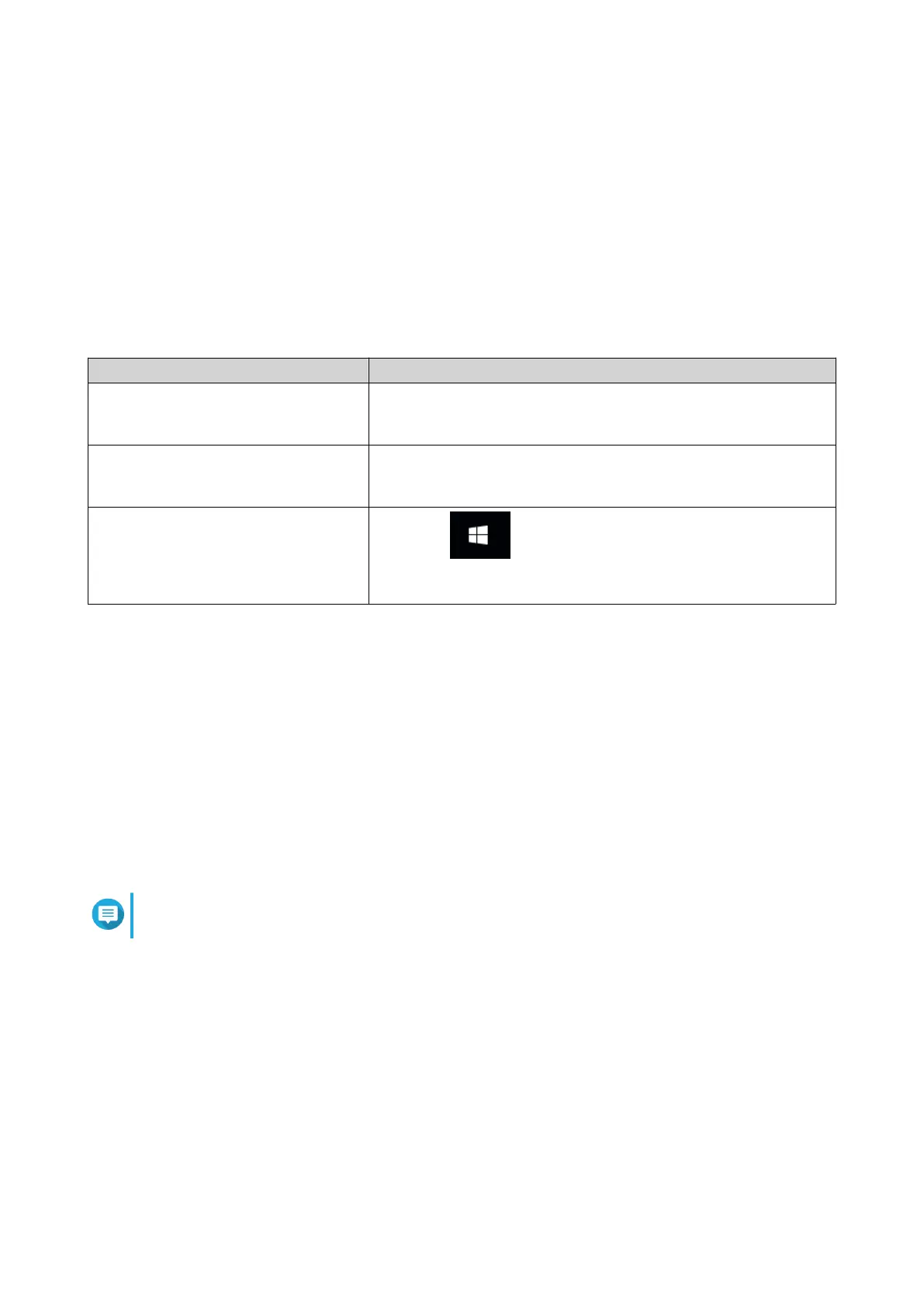6. Click Join.
AD Server and Domain Names
After joining the NAS to the AD domain, you can use the following username formats to log in to the NAS
and access shared folders:
• Local users: NASname\NASusername
• AD users: Domain\DomainUsername
The location of AD server and domain names depends on the version of Windows Server.
Windows Server Version Location
2003 Go to System Properties in Windows.
Example: If the computer name is "node1.qnap-test.com", the AD
server name is "node1" and the domain name is "qnap-test.com".
2008 Go to Control Panel > System in Windows.
The AD server name will appear as the computer name, and the
domain name can be found in the domain field.
2012, 2016
Right-click , and then click System.
The AD server name will appear as the computer name, and the
domain name can be found in the domain field.
Enabling Trusted Domain Authentication
A trusted domain is a domain that AD trusts to authenticate users. If you join the NAS to an AD domain, all
users from trusted domains can log in and access shared folders.
Trusted domains are configured in AD. You can only enable trusted domains on the NAS. By default, this
feature is disabled in QTS.
1. Go to Control Panel > Network & File Services > Win/Mac/NFS > Microsoft Networking .
2. Click Advanced Options.
The Advanced Options window appears.
3. Select Enable trusted domains.
Note
This setting is only available if the NAS is joined to a domain.
4. Click Apply.
The Advanced Options window closes.
5. Click Apply.
Azure Active Directory Single Sign-On (SSO)
Single Sign-On (SSO) is a holistic approach to authenticate users when signing on to applications in Azure
Active Directory. If you enable SSO, a user only needs one login credential to access multiple applications,
irrespective of the platform, domain, or technology used. Without SSO, a user needs a separate credential to
access each application. The NAS supports SSO. Depending on which domain service the NAS joins, the
device will synchronize the domain account information with the appropriate service.
QTS 4.5.x User Guide
Privilege Settings 100

